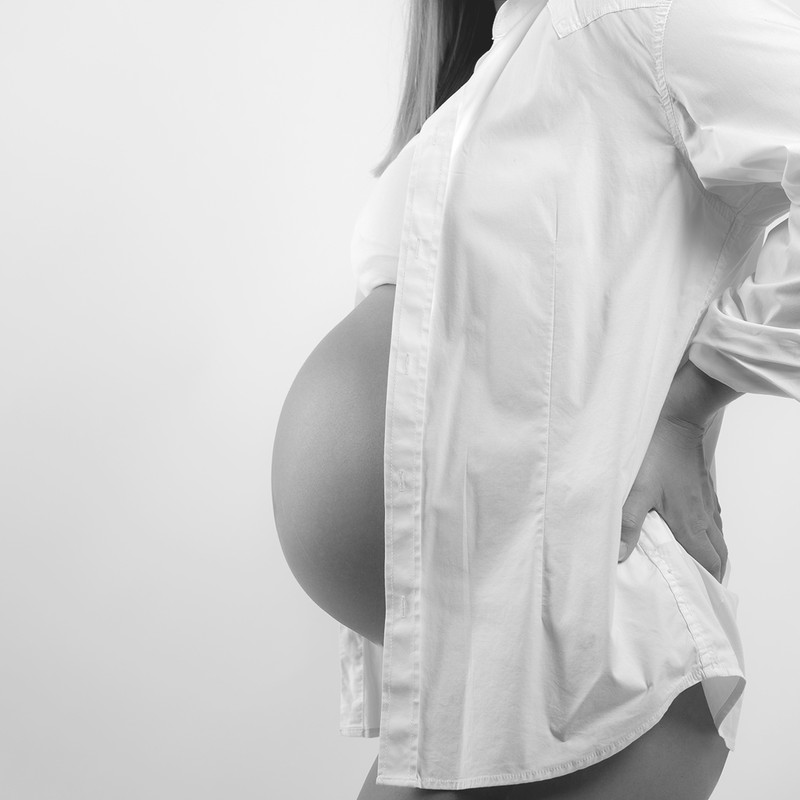Everything You Need To Know About Hypnobirthing
So what exactly is hypnobirthing? Rather than the kind of hypnosis you see performed on stage by the likes of Derren Brown, hypnobirthing teaches mothers to find a deep state of relaxation with a heightened mental awareness. The actual act of hypnobirthing is said to stop your body from entering a ‘fight or flight’ state, putting the mother in control of the experience.
The practice is based on the research of British obstetrician Dr Grantley Dick-Reid, who published the book Childbirth Without Fear in 1933. An advocate for natural childbirth, he believed that when a woman is worried or scared during labour, blood and oxygen is diverted away from the uterus, causing tension and pain. But when a woman remains calm and relaxed, the uterine muscles will avoid tension, allowing the body to produce oxytocin and endorphins, which are a natural pain reliever.
London hypnobirthing expert Rosie Goode also adds that hypnobirthing is a great tool of empowerment for women and helps them to remain in control of the situation: “Hypnobirthing births tend to be gentler and quicker; babies are born feeling good and normally the mother feeling great, and postnatally her body is more likely to bounce back as hypnobirthing mothers are significantly less likely to tear and less likely to have inductions.”
The technique has made headlines in recent years due to a number of celebrity fans, most recently the Duke and Duchess of Cambridge. Following the birth of their third child, it’s been rumoured Kate Middleton and Prince William are fans of the technique. It’s also been adopted by other famous mothers including Jessica Alba, Gisele Bündchen and Giovanni Fletcher. Alba spoke publicly about hypnobirthing after having her two daughters, Honor and Haven, in 2008 and 2011 respectively. Calling it a kind of “guided meditation,” she said: “I’m just concentrating on staying relaxed, because it’s when you get tense that it makes the whole labour worse and more painful.”
Bündchen echoed those sentiments, opting to try the technique instead of an epidural in order to fully experience the birth of her children: “I wanted to be conscious and present for what was happening. I didn't want to be anaesthetised. I wanted to feel." And Fletcher has also spoken out in favour of the practice, which she said helped bring her husband, McFly member Tom Fletcher, closer to the whole experience: “It’s an amazing thing to do with Tom. I know it makes him feel really included in the pregnancy – but more than that, it enables him to see how important and needed his input is.”
Essentially, hypnobirthing is like meditating whilst in labour. It combines deep breathing, relaxation, positive thoughts and upbeat language, as well as visualisation techniques to make the mother feel confident and, ultimately, making the birth that bit easier. But whilst it's thought to help labour go more smoothly, it’s not going to eliminate the pain completely – so you might still want to have that gas and air at the ready.
Hypnobirthing expert Goode also adds that partners are key to the hypnobirthing process. “Couples can learn breathing and relaxation techniques, how to perform a special massage, and the partner in the room can also learn how to help the mother relax deeply before and during birth,” she said. “Confidence boosting, and assertiveness techniques are important, so women feel calm, excited, optimistic and equipped for birth, however their birth flows.”
Rosie Goode’s top tips for hypnobirthing…
Think about what's right for you and your birth: Is it in a pool, at home, in a midwife-led birth centre? Do some research and find the team and birth place that will support you and your needs best. Do all your research as early as possible and decide as late as possible.
Surround yourself with positive people who support your birth plan: What we hear and see during this period impacts the birth. Speak to women who've had positive birth experiences – you’ll learn a lot from them and they’ll help to boost your confidence.
Start hypnobirthing as early as possible: Ideally from 24 weeks – or earlier if you’re particularly anxious. This enables both you and your baby to be as physically relaxed as possible before birth, which will enable the birth to flow more smoothly.
Practice as often as you can: Get used to your hypnobirthing breathing techniques, so you can de-stress in your daily life. Plus, this way you’ll be so used to the process, that the techniques will become automatic during the birth.
Listen to positive affirmations daily: These, along with hypnobirthing audio tracks, will boost your sense of optimism and help you to ignore all the negativity surrounding the birth.
Ensure your partner is on board: If not, think about who might support you in your practices and help you feel good throughout the birth.
Remember, repetition is key: Practice daily in the lead up to birth to reduce anxiety and create a positive pattern for the birth itself. With time, you can shift from panic and fear to excitement.
Find out more at HypnobirthingWorks.co.uk
DISCLAIMER: We endeavour to always credit the correct original source of every image we use. If you think a credit may be incorrect, please contact us at info@sheerluxe.com.


